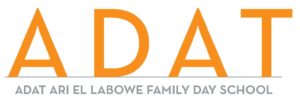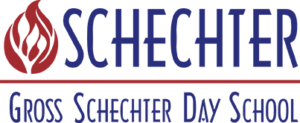I do not have any media training, but I know a good line. And after having done more media hits than I ever would have imagined (and I imagined “zero” so it isn’t that many), the one that seems to resonate the most is the one that still seems the craziest no matter how true:
The choice to open up school should not be considered an act of bravery; the choice to send your children to school should not be considered an act of courage.
And yet that is the current state of affairs here in the Jewish Community School in our nation’s capital. We have parents afraid to send their children to school because of the rise of anti-Semitism and anti-Zionism. We have parents from other local schools looking to move their children to our school because of the rise of anti-Semitism. We have welcomed new Israeli families forced to leave Israel because of the events of October 7th. We have all of that at the same time – we are scared to stand together too visibly and we are scared not to stand together so as not to feel invisible. We are devastated by what is happening in Israel and we are depressed by what is happening around the corner. We are defiant and we are resilient and we are confused and we are exhausted…so exhausted.
My favourite picture of the month is the one featured above – new Israeli students gazing at this thing called “snow”. (And they don’t know the half of it.) Our school is so grateful that it is able to make a meaningful contribution at this time by creating a space for Israeli children to be just that – children. To gaze in wonder at the frozen water dripping from the sky at least for a small while not having to wonder about the wider world and what comes next. We are a school, and that is supposed to be a safe place for children. Canadian Jewish Day Schools are not supposed to be shot at overnight, or receive bomb threats, or be protested. The eight year-olds at our Jewish school in Ottawa are not orchestrating the Israel Defense Forces in Gaza. It would never occur to anyone in the Jewish community I know to find a local madrassa in Ottawa and terrorize their children because we are upset at Hamas. How are we living in a world where it makes sense to attempt to terrorize Jewish children for decisions made by a government thousands of miles away? You want to peacefully protest Israel? Go for it. But making parents afraid to send their children to school?
How do we explain to the children in our school what is happening without traumatizing them? We use examples from Jewish history and from Jewish text to nourish and to inspire. We pray and we write letters and we donate and we welcome new Israeli friends. We teach media literacy and fact from fiction. We lobby and we advocate. We stand together.
How do we ensure our children get to be children? We play and we learn Math and we learn French and we learn Science. We have assemblies and we have field trips and we have special programs. We laugh and we sing and we do all the normal things. We stand together.
I don’t know how long this delicate dance will continue. Each day we calibrate how much space this should take up at each grade-level. Each day we muster up the strength to teach and to love our students, even when brokenhearted. Each day we come prepared for noise, but pray for quiet. Each week we share news about security hoping it will be the last week it is needed.
The goal of terrorism is to cause terror and I’d be lying if I said it hasn’t had an effect. But we refuse to stand down or to stand still. This is an inflection point and our children will be shaped by what we do now. Am Yisrael Chai is not a hashtag, but an imperative. Am Yisrael Chai isn’t just the rallies and the marches – however important those things are – it is living a Jewish life in full and in the open. I’ve never been prouder to run a Jewish day school. What we do now ensures that the next generation will stand up and stand with Israel when it inevitably becomes necessary. What we do now helps ensure that there will be an Israel, which with the rise of anti-Semitism reveals itself to be more needed than ever.
It is true that operating a school shouldn’t be an act of courage, but if it is, colour our school courageous – from the admin to the teachers to the office to the security guards to the maintenance people. And it is true that sending your children to school shouldn’t be an act of bravery, but if it is let Am Yisrael Chai be sending your children to a Jewish school open to receive them with loving arms. Each day the school bell rings, the doors open, Jewish children enter with smiles, and we participate in the miracle of Am Yisrael Chai. Today, tomorrow and forever. Ken y’hi ratzon.




 So…it’s been a while.
So…it’s been a while.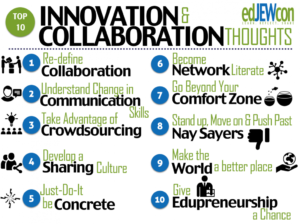
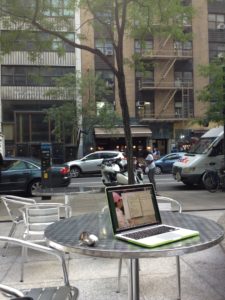
 NewOrg and less and less from us as the transition from what was to what will be grows closer each day. Critical information about “Membership”, “Conference”, “Fee For Service”, “Staffing”, etc. – the stuff you really need to know in order to better understand your engagement with NewOrg next year and beyond is finally making its way to the field. And not a moment too soon (and maybe a few moments too late) considering our earliest schools are already beginning to close for the summer.
NewOrg and less and less from us as the transition from what was to what will be grows closer each day. Critical information about “Membership”, “Conference”, “Fee For Service”, “Staffing”, etc. – the stuff you really need to know in order to better understand your engagement with NewOrg next year and beyond is finally making its way to the field. And not a moment too soon (and maybe a few moments too late) considering our earliest schools are already beginning to close for the summer. We don’t know exactly what or who the future will bring. But we know what the past and present has meant. On behalf of the staff and the board of the Schechter Day School Network, let me thank all our stakeholders one last time and to be clear that we are not saying shalom, but l’hitraot.
We don’t know exactly what or who the future will bring. But we know what the past and present has meant. On behalf of the staff and the board of the Schechter Day School Network, let me thank all our stakeholders one last time and to be clear that we are not saying shalom, but l’hitraot.

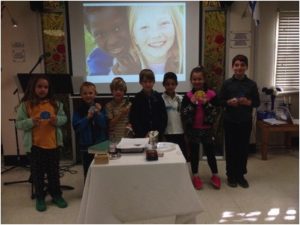


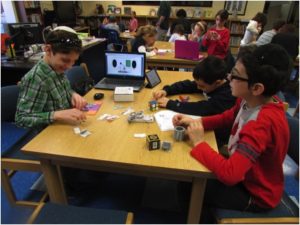 the GBDS Science Academy, with the goal of employing hands-on , inquiry and project-based learning and experiments at all grade levels. This innovative curriculum integrates the Next Generation Science Standards, the Engineering Design Process, and environmental awareness. A partnership with PicoTurbine/STEAM Rocks! has led to 3D design enrichment programs during school breaks.
the GBDS Science Academy, with the goal of employing hands-on , inquiry and project-based learning and experiments at all grade levels. This innovative curriculum integrates the Next Generation Science Standards, the Engineering Design Process, and environmental awareness. A partnership with PicoTurbine/STEAM Rocks! has led to 3D design enrichment programs during school breaks. the only Leader In Me Jewish Day School in NJ. Based on the
the only Leader In Me Jewish Day School in NJ. Based on the 




